Uncrewed Maritime Systems (UMS) Certificate Programs
Uncrewed Maritime Systems (UMS) Certificate Programs
Uncrewed vehicles are increasingly involved in routine, innovative, and emergency data collection in the marine environment yet few curricula exist worldwide which provide comprehensive instruction in the field of uncrewed maritime systems. The UMS Certificate Programs will provide students with a working knowledge concerning the operation of a variety of uncrewed maritime systems and help them to understand the environment in which the systems operate and how that environment factors into decisions and mission planning.
If you are interested in the UMS Certificate Programs please send an email to the%20UMS%20Program%20Coordinator or call 228.236.6572.
***The application deadline has passed for the
Fall 2025 UMS Tier 1 classes.***
UMS Certificate Program - Tier 1
Next Course Delivery: Spring 2026, Dates TBD
- Class size is limited to 15 students.
- Applications will be considered on a first-come, first-served basis.
- Application deadline: TBD
- Applicants are urged to submit transcript and immunization records showing two MMR dates (or documentation of a positive titer test) by the application deadline.
- If you have questions email Carl%20Szczechowski.
What Will I Learn?
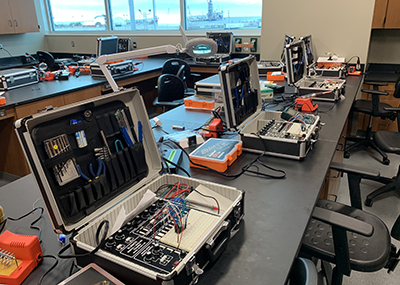
PLAN OF STUDY
- MAR 431: Basic Marine Instrumentation (3 hours)
- MAR 434: Operating Instrumentation in Marine Environments (3 hours)
- MAR 433: Marine Autonomous Vehicles (3 hours)
- MAR 433L: Marine Autonomous Vehicles Lab (1 hour)
_____________________________
Students will learn foundational material in oceanography and ocean engineering related to uncrewed undersea (e.g., buoyancy gliders, Iver, REMUS, SeaBED, Eagle Ray), surface (e.g. SeaTrac, Saildrone, Ocean Aero Triton), and aerial (e.g., Wingtra One) vehicles and other non-vehicular systems (e.g., Wirewalker, profiling floats, fixed buoys and moorings). Topics covered will include physical and geological oceanography, acoustics, electronics, materials (pressure and temperature considerations, corrosion, biofouling), buoyancy, ballasting, vehicle stability, sensors, navigation, and communications.
This 10-credit hour program (four courses including one lab), compressed into five weeks of instruction, is intended to provide sufficient background so that students appreciate what it takes to safely and effectively operate uncrewed systems in challenging marine environments.
Students will work with individual electronic workstations and buoyancy glider kits to gain hands-on experience with buoyancy, ballasting, electronics, microprogramming, materials, batteries and connectors. By the end of the five weeks each student will have constructed, and tested in a ballasting tank, a small functioning buoyancy glider.
- MAR 431: Basic Marine Instrumentation (3 hours): This course offers an in-depth exploration of the fundamental principles behind sophisticated oceanographic sensors. You'll get hands-on experience with instruments that measure pressure, temperature, conductivity, sound speed, currents, and ocean depth. Learn about a variety of tools, from CTD instruments and optical sensors to current meters, sonars, and digital cameras. You'll also gain insights into basic electronics, analog-to-digital conversion, sensor deployment, and maintenance. Prepare to be immersed in the technical marvels of oceanography!
- MAR 434: Operating Instrumentation in Marine Environments (3 hours): This course focuses on the operation of uncrewed maritime systems, exploring ocean physical structures, acoustics, and currents. Delve into topics like underwater communication, power supply, corrosion, and biofouling. Learn about the impact of geographical position, depth, and seasonal variations. From seafloor geology to collision hazards and river outflows, this course prepares you for the complexities of marine instrumentation in diverse environments.
- MAR 433: Marine Autonomous Vehicles (3 hours): This course emphasizes the selection, configuration, deployment, and recovery of various autonomous vehicles. Explore a wide range of platforms, from aerial and surface systems to underwater vehicles. Gain knowledge about GPS positioning, satellite communications, and power systems. Learn the intricacies of buoyancy, ballasting, and non-satellite navigation. With a comprehensive overview of uncrewed systems, this course equips you with the skills to excel in the field of marine autonomy.
- MAR 433L: Marine Autonomous Vehicles Lab (1 hour): This lab complements lecture material from other courses, offering practical exercises in soldering, circuit building, and Arduino programming. Engage in the construction and testing of a SeaGlide buoyancy glider, from assembly to racing. Program missions for uncrewed surface vehicles and observe real-world glider disassembly. This lab provides invaluable practical experience in density, buoyancy, and ballasting, central to the operation of uncrewed maritime systems.
UMS Operator Certificate Program - Tier 2
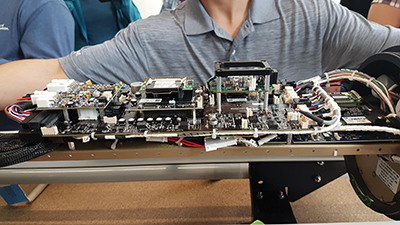
PLAN OF STUDY – UMS Operator Certificate (Advanced)
- MAR 435 Operating Instrumentation in Marine Environments II (3 hours)
- MAR 436 UMS Vehicle Planning (3 hours)
- MAR 438 UMS Vehicle Management (3 hours)
- MAR 440 UMS Field Project (3 hours)
_____________________________
In this follow-on curriculum students will delve into ocean science and engineering topics, including characteristics of specific platforms and sensors, physical environmental factors affecting UMS in both operational and research and development settings. The curriculum draws knowledge from real-world case studies of specific situations, sensors, and platforms. Students will apply these concepts in developing and conducting operations during a short field project.
The UMS Operator Certificate program consists of four courses totaling 12 credit hours compressed into five weeks of instruction including a field project during which students will conduct mission analysis & planning, specific vehicle and sensor matching, specific vehicle preparation, launch, operation, and recovery, followed by quality review of collected data.
What Will I Learn?
- Evaluate Mission Requirements: Assess specific mission needs, environmental limitations, and select the appropriate hardware.
- Read and Assemble Electronics: Interpret schematics, assemble electronic components, and program micro-controllers used in modern undersea vehicles.
- Adjust Ballast and Trim: Determine and adjust the ballast and trim of various types of autonomous undersea vehicles for different conditions.
- Troubleshoot Components: Identify and fix failures in cables, connectors, and simple electronic components.
- Plan Glider Missions: Develop and write operational programs for glider missions.
- Execute AUV Missions: Plan and program powered AUV missions for successful execution.
Uncrewed Maritime Systems Tier 1 Certificate Program Recognizes Six Graduates of the Spring 2025 Cohort
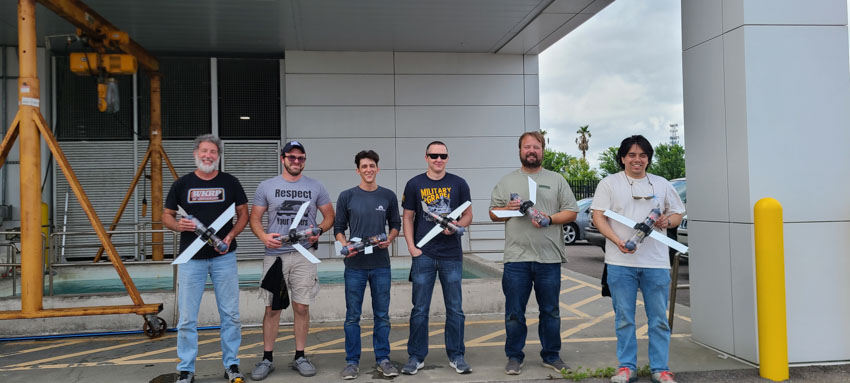
The class recently graduated 15 students in a ceremony while observing Covid-19 guidelines. Graduates, guests, faculty and speakers maintained a six-foot distance and wore masks. The ceremony was also streamed live via zoom. Read more
| Class of 2020 |
|---|
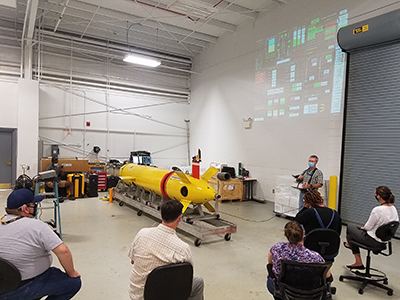 |
| Class of 2019 | |
|---|---|
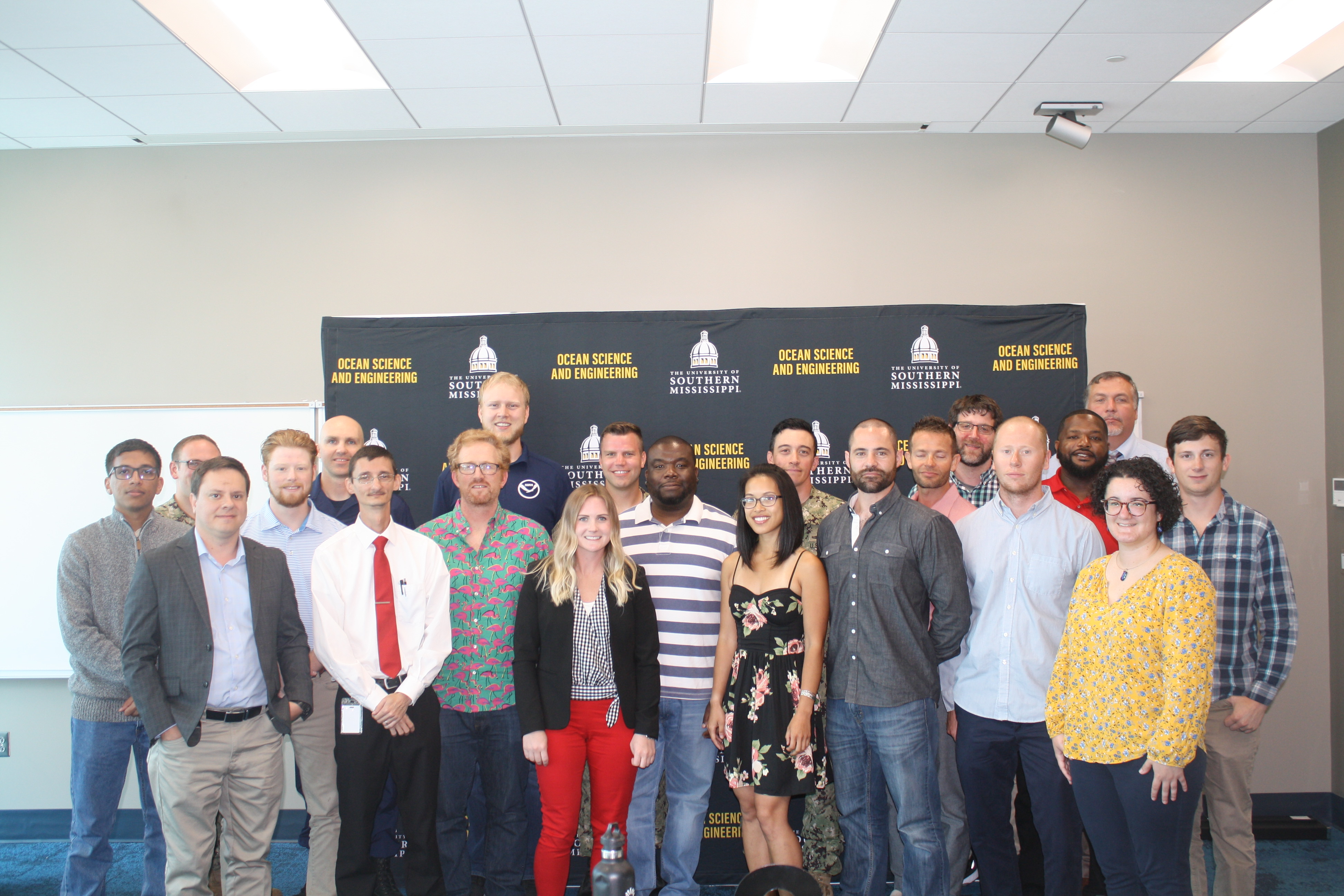 |
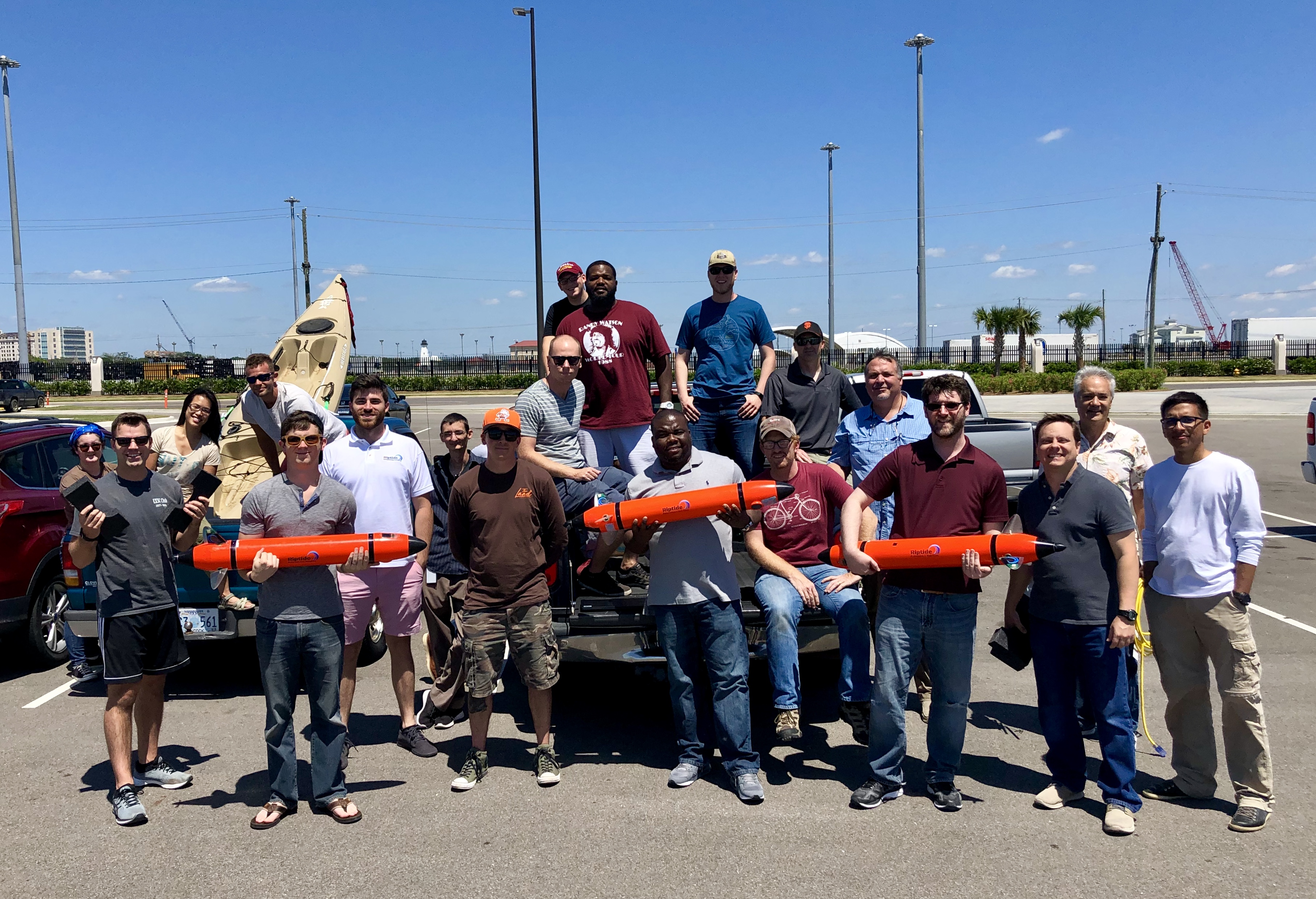 |
| Navy Unmanned Certificate Program Began on 5/2/2017 |
|---|
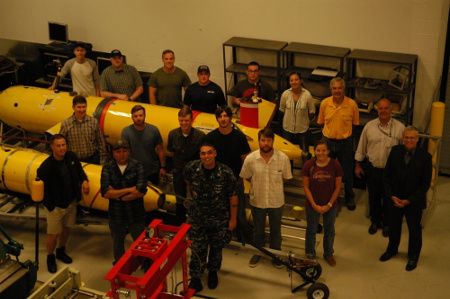 |
| NAVY Students will be first in the nation to earn a certificate in Uncrewed Maritime Systems at USM. |
Navy Unmanned Certificate Program Began on 5/2/2017
- NAVY Students will be first in the nation to earn a certificate in Uncrewed Maritime Systems at USM. Read Navy article here.
Frequently Asked Questions
What is covered in the Uncrewed Maritime Systems (UMS) Tier 1 Program?
The Tier 1 Program consists of four courses totaling 10 credit hours.
What is covered in the Uncrewed Maritime Systems (UMS) Tier 2 Program?
The Tier 2 Program consists of four courses totaling 12 credit hours.
When are the UMS Certificate Programs offered?
- Tier 1 is offered during a five-week period in the spring (mid-March to mid-April).
- Tier 1 or Tier 2 is offered during a five-week period in the fall (mid-October to mid-November).
- During the five-week period, classes are held every weekday, seven hours per day. No classes are held on USM-recognized Holidays. The only USM-recognized holiday currently pertinent to the UMS Programs is Good Friday.
Where are the Programs taught?
Tier 1 is taught at the Marine Research Center at the Port of Gulfport. Tier 2 has been taught at USM’s Oceanographic Support Facility, building 1029 at Stennis Space Center.
Can the courses be taken online?
No and unlikely to happen due to hands-on work.
Who teaches the courses?
Instructors are Kevin Martin and Carl Szczechowski.
- Kevin is a Senior Marine Instrumentation Specialist and is the Ocean Observing Manager for USM’s Division of Marine Science.
- Carl is the Coordinator for USM’s Uncrewed Maritime Systems (UMS) Certificate Programs.
What are the demographics for students who have enrolled in the past?
Educational levels range from undergraduates and folks with community college backgrounds
up to PhD recipients. Ages have ranged from 19 to 60 years of age.
Students have had degrees and work experience in oceanography, meteorology, hydrography, geology, biology, chemistry, ocean acoustics, fisheries science, mechanical and industrial engineering, computer science, and electrical/electronics technology,
Most students have full time jobs with the Navy (civilian and uniformed), NOAA, Army Corps of Engineers, Coast Guard, other federal agencies, or private industry.
Does it cost more for students who are not residents of Mississippi?
Non-residents pay more for tuition and university fees than residents of Mississippi.
Do some applicants receive special consideration in terms of tuition and university
fees?
Yes. Department of Defense (DoD) and National Oceanic and Atmospheric Administration
(NOAA) employees sponsored by their agency, regardless of state of residency, pay
tuition and university fees as if they are Mississippi residents. An SF-182 must
be provided to the Uncrewed Maritime Systems Certificate Program Coordinator.
DoD and NOAA contractor employees can submit a letter from their employer to the USM Registrar. The letter should be on company letterhead, verifying employment of the applicant and stating that the employee works on a DoD or NOAA contract. The employee should be receiving some financial support from the employer.
How much are the tuition and university fees?
Before using any of the on-line tuition/fees tables provided by USM, please review
the following:
- MS resident or non-resident? Use the applicable category.
- Undergraduate or graduate rate? The UMS Program courses are at the undergraduate level.
- Academic year? The academic year begins in the fall of one year and is followed by the spring in the next year. For example, the 2024-2025 academic year starts with the 2024 fall semester and is followed by the 2025 spring semester.
- Charged per credit hour? Yes. For undergraduates, tuition and university fees are charged per credit hour up to twelve credit hours. Tier 1 totals 10 credit hours and Tier 2 totals 12 credit hours so UMS Programs are charged per credit hour.
Calculation of total tuition and university fees: Go to General Tuition Fees and click on the appropriate options as described above.
Are there any other fees in addition to tuition and university fees?
For both Tier 1 and Tier 2, in addition to tuition and university fees, there is a
program fee of $1000 which covers instructional and lab expenses.
Financial aid available?
The University of Southern Mississippi does not provide financial aid for students
in certificate programs.
What about funding through the GI Bill?
At least one student in the past used the GI Bill to pay for expenses. Start by going
to Center for Military Veterans, Service Members and Families's website and apply for a UMS Program.
Are there any prerequisites for students interested in the Tier 1 Program?
A high school diploma or GED is required for the Tier 1 Program.
Are there any prerequisites for students interested in the Tier 2 Program?
Students applying for the Tier 2 Program must have successfully completed the Tier
1 Program.
Can current USM students apply?
Yes, but it may not be possible to take other USM full-semester in-class courses in
the semester that you sign up for the UMS courses.
We have had a student that was able to successfully complete two USM on-line courses in the same semester that she took our UMS courses.
How does one apply for the UMS Programs?
The application process is to be completed online. When the application app becomes
operational for a given offering, a link to the app can be found in our page.
Early in the online application process a temporary PIN will be emailed to you. That email contains some verbiage about activating your account; ignore that verbiage and just use the PIN provided.
What is the application deadline?
The applications deadline is typically set for a date less than one month before classes
start. Tuition and fees are not due at the time of application but are collected later.
Is a transcript required for application?
Yes. Applicants are required to submit to the USM Office of Admissions, an official
transcript from their most recently attended school. Applicants are urged to submit
documentation by the application deadline.
Transcripts may be submitted by using a service such as Escrip-Safe or Parchment and choosing USM Admissions. Official transcripts can also be mailed from the applicant’s most recently attended school to:
University of Southern Mississippi
Office of Admissions
118 College Drive, Box 5166
Hattiesburg, MS 39406-0001
Is other documentation required for application?
Yes. Also required are immunization records showing two MMR dates or documentation
of a positive titer test. Immunization records can be obtained from a state Health
Department. Stennis Space Center (SSC) employees can contact the SSC Clinic.
A copy of the immunization records can be sent to admissionsFREEMississippi, faxed to 601-2665148, or mailed to the Office of Admissions address listed earlier.
Do you have to be a US citizen to enroll?
Yes, an applicant must be a US citizen. This may change in the near future.
Do the UMS Programs have corporate partners?
Although we have good relationships with many companies, and have personnel provide guest presentations or facility tours, the UMS Programs do not have any formal partnerships with any companies.
We do have a formal educational relationship with the Naval Meteorology and Oceanography Command (NMOC) and guarantee a number of seats to them.
We also receive support from NOAA’s National Data Buoy Center (NDBC).
Have UMS Program alumni moved on to new positions?
The UMS Programs do not systematically keep tabs on alumni. At least two alumni subsequently enrolled in USM's Ocean Engineering program. One alumnus is now working for Lynker after years with NOAA. Another alumnus is now working for Ocean Aero after years with the Navy.